What diet should I follow if I have diabetes?
What diet should I follow if I have diabetes? 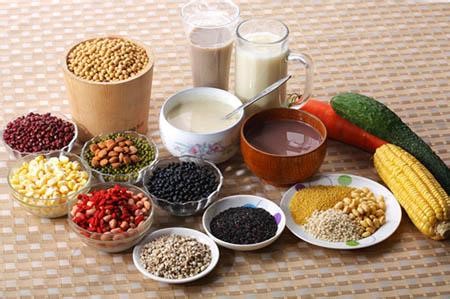
Dietary therapy is an essential part of diabetes treatment, and diabetics need to pay attention to a few points in their diet in order to control their blood sugar:
1, do not be superstitious in sugar-lowering vegetables, such as bitter melon, okra and other vegetables, although it has a certain role in lowering blood glucose, but also can only play a supporting role, can not replace the drug. Sugar lovers can use these vegetables as daily vegetables, often eat, not eat all the time, even instead of sugar-lowering drugs.
2. Limit total energy intake. If too much energy is consumed through the diet, it will lead to fluctuations in blood sugar, which is not conducive to disease control. In particular, avoid high-sugar, high-fat and high-salt food intake, which is not suitable for diabetics to consume in large quantities.
3, maintain nutritional balance, although diabetic patients require limiting energy intake, but also pay attention to nutritional balance, the daily diet should include cereals and potatoes that is miscellaneous beans, vegetables, fruits, livestock and poultry meat, fish and shrimp, milk and dairy products, soybeans and nuts, enough drinking water and so on.
4, diabetic patients should pay attention to the consumption of fruit to choose a smaller impact on blood sugar, such as apples, pears, oranges, grapefruit, apricots, peaches, etc., and bananas, lychee, cinnamon, etc., to eat or not eat; root vegetables such as potatoes, taro, etc., due to the high content of starch, the sugar lover to be consumed as a staple food, that is, consume the potatoes, taro, and other vegetables, you need to reduce the amount of the corresponding staple food.
5, diabetic patients are not recommended to drink alcohol, especially do not drink on an empty stomach, drinking on an empty stomach is easy to lead to hypoglycemia occurs, if you can not avoid drinking alcohol, then you need to limit the amount of alcohol. Women should drink no more than 15 grams of alcohol per day, and men no more than 25 grams (15 grams of alcohol is equivalent to 450 milliliters of beer, 150 milliliters of wine, or 50 milliliters of low-temperature white wine), and no more than two times per week.
Eat a little of these foods and your blood sugar will skyrocket.
Fruits, such as watermelon, lychee, longan, pineapple, and dates, are foods with a very high glycemic index, which can raise one's blood sugar relatively quickly.
Relatively low glycemic index fruits include apples, pears, oranges, peaches, etc.; and
White rice, steamed buns, doughnuts, sticky rice, white bread, ramen, these foods made from meticulously processed grains have a high glycemic index. But white rice is the root of our satiety, so we can't possibly stop eating to stabilize sugar, so what should we do?
Sugar lovers can add some wheat or brown rice to their rice, which not only won't raise the sugar level so quickly, but also provides vitamins.
In addition, vegetables are generally low on the glycemic index, so it's okay for diabetics and people with high blood sugar to eat more of them as appropriate.
8 Dietary Taboos for Sugar Lovers
First, candy, condensed milk, honey, soft drinks, canned or boxed fruit juices, sweetened preserves, egg rolls, Chinese and Western sweet snacks, sweetened canned food and other sugary foods, as well as white sugar and brown sugar eat less or do not eat.
Second, do not eat too salty, avoid the intake of processed or pickled food, cooking is best to take stewing, steaming, boiled, cold and so on, to avoid thickening, sweet and sour, honey sauce, eggplant juice, vinegar and other cooking methods.
Third, eat less fried, pan-fried and crispy food, as well as pork rinds, chicken skin, nuts (such as: peanuts, melon seeds, cashews, pine nuts, walnuts, etc.) and other foods high in fat.
Fourth, the staple food for diabetics is usually rice and noodles, but coarse grains are high in inorganic salts, vitamins and dietary fiber, so diabetics can choose oats, cereals, cornmeal and other dietary fiber-rich foods.
Fifth, fried vegetables choose unsaturated fatty acids high oil (such as: soybean oil, peanut oil, corn, sunflower oil, olive oil, safflower seed oil, etc.), less saturated fatty acids high (such as: lard, butter, cream, fatty meat, etc.).
Six, containing starchy food, such as: sweet potatoes, potatoes, taro, corn, rhododendron, red beans, green beans, can not be eaten at random, must be consumed according to plan.
Seven, more carbohydrate-containing potatoes, yams, taro, lotus root, garlic scapes, carrots, etc. Use less or reduce the amount of the corresponding staple food after consumption.
Eight, vegetables are rich in dietary fiber more, have sufficient water, low calorie, and has a satiety effect, diabetic patients in the control of calories during the period, after labor may be hungry, so you can eat vegetables containing less sugar, preferably boiled with water and add some condiments to mix and eat.
The treatment of diabetes is multi-faceted, multi-faceted coordination and cooperation in order to make the blood glucose level relatively stable, dietary control is one of the very important aspects of the so-called dietary control does not mean that completely do not eat rice, vegetables and meat, carbohydrates, fats, proteins are the three major nutrients in the human body, balanced dietary patterns are helpful for the control of blood glucose.
Exactly how much you need to eat per day with diabetes needs to be calculated based on height and weight to ensure that energy intake meets demand without excess, with the goal of both achieving or maintaining an ideal body weight and meeting nutritional needs in different situations. For example, a moderately physically active person has a daily energy requirement of 30-35 cal/Kg.d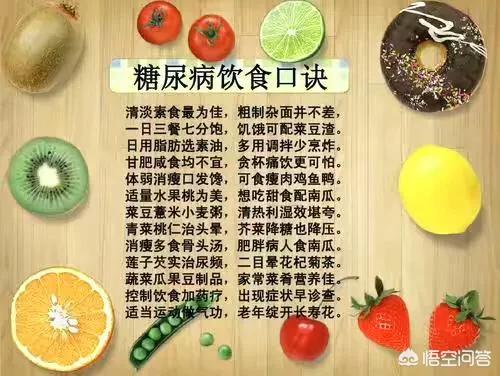
A normal adult weighing 60 kg has a total daily energy requirement of 1,800 calories.
1, fat provides 20-30% of the total energy, try to eat less fried chicken, cream and other intake of trans fatty acids, eat less fatty meat, animal fats, animal offal and other saturated fatty acid foods, to encourage the eating of vegetable oils, including canola oil, soybean oil and other vegetable fats.
2, rice, noodles, steamed bread and other staple foods provide energy accounted for 50-60% of the total energy, a 60kg or so adults, the total amount of staple food per day is about 300g, that is, six taels, proportional to the distribution to the three meals, at the same time to regular meals, do not overeat or do not eat. Foods with higher sugar content or faster glycemic rise are not suitable for diabetic people to consume, no sugary drinks, fruits are recommended to be controlled before blood sugar control is stabilized.
3, meat, eggs and other protein intake, diabetes is prone to chronic damage to the kidneys, renal function is normal, meat, eggs and other protein intake can account for about 20% of the total energy, to ensure that the supply of high-quality proteins such as eggs, meat and more than one-third of the total.
4. Alcohol is not recommended for diabetics.
5, eat more fresh vegetables, increase the intake of coarse grains, salt intake should be limited to 6g per day thought, at the same time to control MSG, soy sauce, seasoning sauce, pickles and other hidden salt content of high food intake.
6. People with diabetes are susceptible to deficiencies of B vitamins, vitamin C, vitamin D, and micronutrient deficiencies, which can be supplemented appropriately based on nutritional assessments.
Overall, nutritional guidance for diabetes mellitus is complex and individualized. If you do feel that you are reading a bit too much, it is recommended that you receive training in diabetes health education and dietary guidance from the appropriate specialty, or seek guidance from your own family doctor.
Thanks for the invitation to answer, when it comes to the diabetes diet, many people will talk about the coarse and fine combination of ah, calorie control ah, eat less sweets and meat ah, here come to the actual details of some problems.
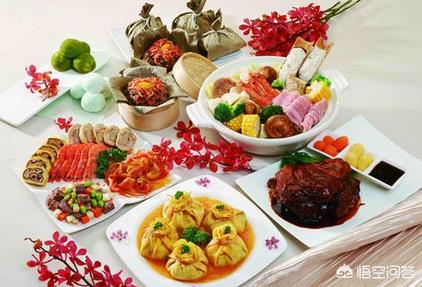
1. Cooking details
The reason why we recommend sugar lovers to cook at home is because they can control the amount of oil and salt they use. When eating in restaurants or ordering takeout, the food is often heavy in oil and salt, and sugar may also be added quietly. For sugar lovers, the best way to cook should be steaming, boiling and mixing, and less frying, braising and thickening.
When cooking, you can add acids like vinegar or lemon juice to your dishes, which can enhance the flavor of the food and thus reduce the amount of salt used. Take more natural ingredients like onions, ginger, garlic, and cinnamon to flavor your food for both flavor and blood sugar control.
2. Eating details
Sugar friends eating avoid swallowing, eating slow digestion and absorption is also slow, the rate of glucose is naturally slow. In addition, there is a blood sugar control skills, that is, before eating a bowl of vegetable soup, or eat some vegetables, and then eat meat and staple foods, so that the dietary fiber in the vegetables can be very good wrapped around the food, slowing down the speed of digestion and absorption, postprandial glucose will not rise so fast.
In addition, sugar lovers can also prepare a their own exclusive dinner plate, a little smaller, so that you can better control the amount of food Oh.
3. Post-meal details
Sugar friends do not immediately after the meal nap, do not sit still for a long time, it is best to half an hour or an hour of proper exercise will help delay the postprandial blood sugar peak. Sugar lovers after a meal, before the next meal, you can also add some meals, which can alleviate the feeling of hunger. Of course, the food of the additional meal is divided from the total food of the whole day, and can not eat extra extra oh!
SugarManHealth.com original answer, give me a like if you think it's good!
It's true that we all know that we need to control our diet when we have diabetes, but many of us may not know exactly how to do so.
I will talk about the dos and don'ts in each of the seven areas related to diet: staples, vegetables, soy products, meat, dairy, fruits, and beverages.
I am the founder of Nutrition on the Frontline Nutritionist Liang Fangli, I will be updated every day close to life, practical nutrition knowledge, please pay attention to understand.
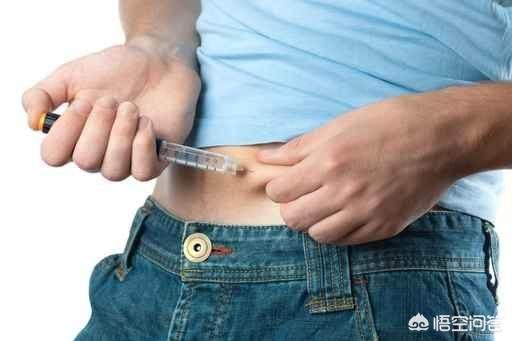
I. Staple food: more coarse grains, less fine grains
Because staple foods contain a lot of carbohydrates that tend to raise blood sugar, many diabetics limit the amount of staple foods they eat.
This is true in one respect, but carbohydrates are again the main source of energy for our body and need to reach a certain amount in order to satisfy the body's needs, and the amount of staple food per day is not recommended to be less than 200 grams.
For the choice of staple foods, it is recommended that diabetics mix and match coarse and fine, and eat some oats, quinoa, brown rice, buckwheat, etc. as well as red beans, green beans, kidney beans and other miscellaneous beans instead of half of the staple food.
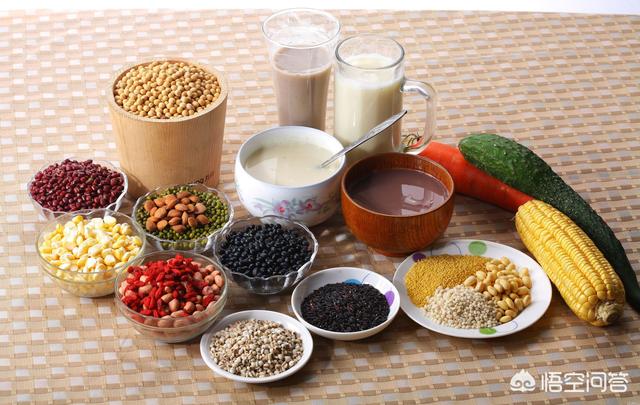
Second, vegetables: eat more light less oil dark-colored vegetables
Dark-colored vegetables are relatively more nutritious, containing more carotenoids, vitamin C, chlorophyll, lycopene, anthocyanin, lutein, etc. Commonly, there are carrots, spinach, broccoli, purple kale, oilseed rape, celery, leeks, coriandrums, tomatoes, tomato, persimmon peppers, green peppers and so on.
In addition, vegetables of fungus and algae are rich in polysaccharides, which can calm postprandial blood sugar, therefore, when diabetics choose vegetables, they can also eat some fungus, kelp, shiitake mushrooms, nori and so on appropriately.
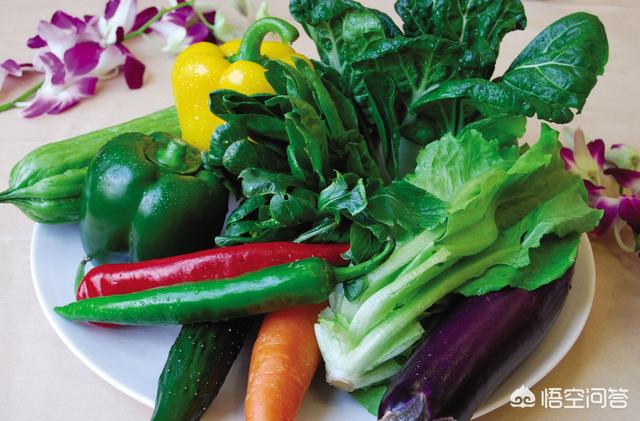
It is recommended that diabetics eat 500 grams of vegetables per day, more than half of the dark-colored vegetables, and try to use steaming, quick frying, blanching, cold and other light cooking methods with less oil and salt.
III. Soy products: eat in moderation
Soy products are rich in protein, north tofu, tofu skin, dried tofu, etc. is also rich in calcium, it is recommended that diabetics eat 50 to 75 grams of soy products per day, try to use stewed, boiled way, reduce the intake of oil.
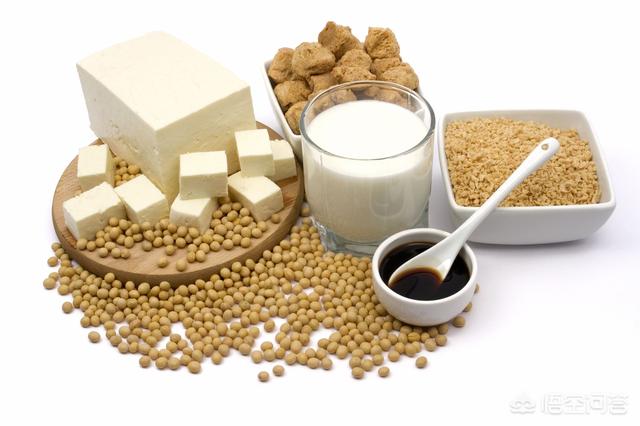
IV. Meat: Eat lean meat and poultry
About half of the diabetics belong to the obese people, so the choice of meat is, try to choose lean meat, fish and shrimp meat, poultry, etc., 75 grams to 100 grams of meat per day is recommended.
V. Milk: Drink low-fat milk
Some people believe that milk contains lactose and that diabetics should not drink milk.
In fact, milk is low in sugar, around 3%, and is primarily lactose, which promotes calcium absorption and also provides diabetics with high-quality protein.
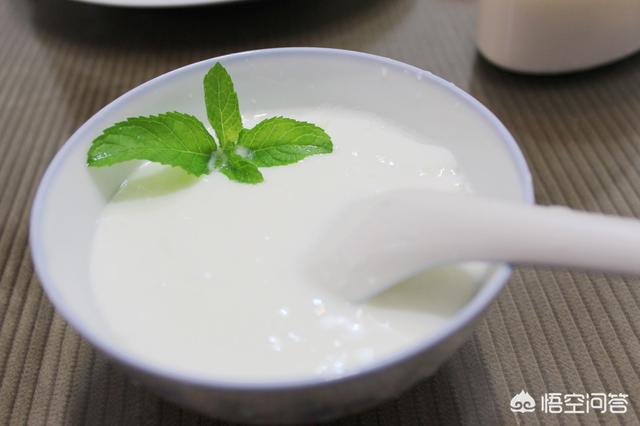
Diabetics are advised to consume low-fat milk, about 300ml per day.
VI. Fruits: choose fruits with low sugar content
Diabetics can eat fruits, try to choose fruits with low sugar content, such as kiwi, strawberries, cherries, cherries, pears, prunes, papayas, etc., and also pay attention to the amount of food, it is necessary to pay attention to reduce a certain amount of staple food is recommended to 200 grams per day or less.
It is recommended that you eat it with an extra meal, and when you do, cut it into small pieces and eat it slowly.
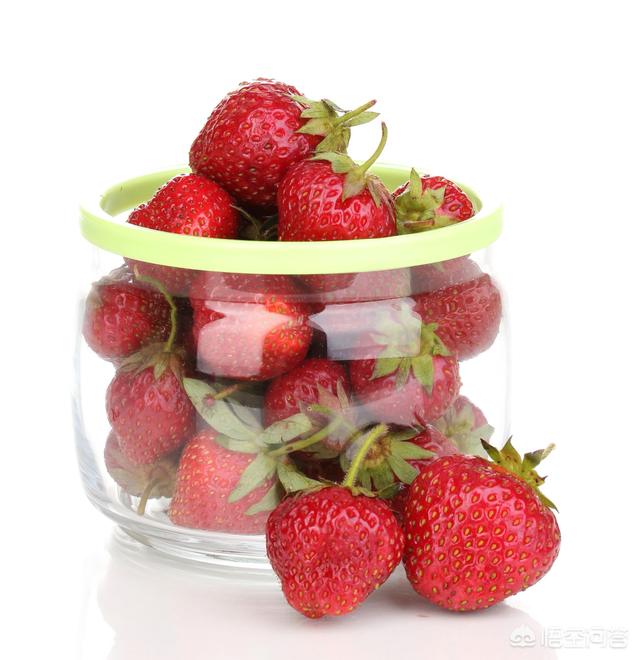
VII. Drinks: more plain water, light tea
For diabetics, the best drink is plain water, or you can drink some light tea according to your personal habits.
Try not to drink sweet beverages during the day, and don't add sugar when drinking soy milk.

The above is my summary of the diabetic when choosing various types of food some details, in addition, like chewing slowly, eat small meals, etc. is also a control of the details of the diet.
Dietary control is not about eating less or not eating at all, but some foods should be eaten more and some foods should be eaten less, but overall there is a limit to the amount of diabetic patients to master these details, and in the daily diet of conscientious implementation, can play the purpose of dietary control, to achieve the goal of controlling blood glucose.

Diabetes is a chronic disease that is closely related to diet. Whether your blood sugar control is good or bad, it needs to be based on diet control + exercise.
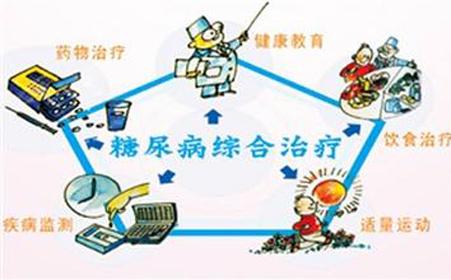
Today we're going to take a look at how and what to eat when you have diabetes so that our blood sugar doesn't fluctuate as much.
1. First, let's look at the general principles of diabetes
If you've been sick for years, you've surely heard that diabetes requires a light diet of moderate energy, low sugar, low fat and low cholesterol, with small, frequent and regular meals. (Hear it in your ears.)

But what about the fact that in addition to that, diabetics inHow to Cook VegetablesThere's something to be said for that, too.
How to cook vegetables? Cooking should be done by boiling, poaching, steaming and mixing, with less deep-frying, pan-frying, stir-frying, etc.; no sugar, less oil and low salt.
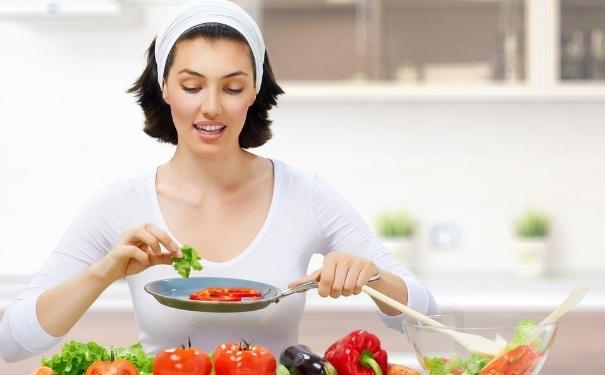
Sweets are not recommended for diabetics(e.g. candies, honey, sugar, rock sugar, honey, Chinese and Western sweet snacks, sweet cookies, pastries, condensed milk, soft drinks, sweetened cream of wheat, chocolate, canned fruits, dried fruits made of sugar, etc.)
In addition to sweets, white porridge should be avoided at all costsBecause refined white porridge with rice is easy to raise blood sugar for most diabetics.
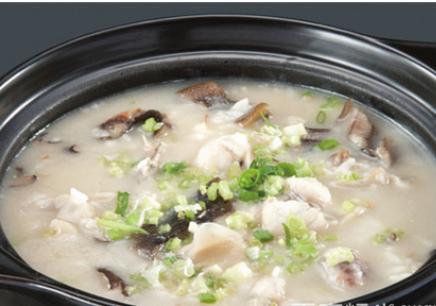
For those who like congee, you can switch to grains and cereals congee or vegetable and meat congeeThe mix of foods will have a slower rate and ability to raise blood glucose than a single food.But be careful not to be too rotten Oh, otherwise easy to digest and absorb is also easy to raise blood sugar.
2. When we talk about porridge, we think about our staple food category
In addition to rice, noodles are our staple food, we usually eat buns, steamed bread, etc. is also our staple food, diabetic people pay attention to food diversification, is the requirement of food types, varieties, color diversification, soYou can't singularly think that I'm diversifying my food by eating foods with different names.
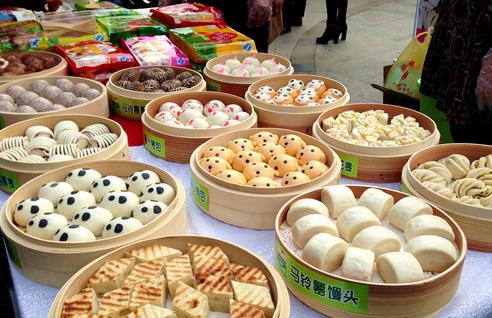
What do you have to do with your entrees?
Staple foods are rationed and combined with coarser and finer foods.
Choose foods with a lower glycemic index and high dietary fiber contentSuch as buckwheat, millet, oats and other coarse grains, rice can be oats, buckwheat, millet, black beans and other coarse grains such as beans, add rice mixed cooking, can increase satiety and help control blood sugar;
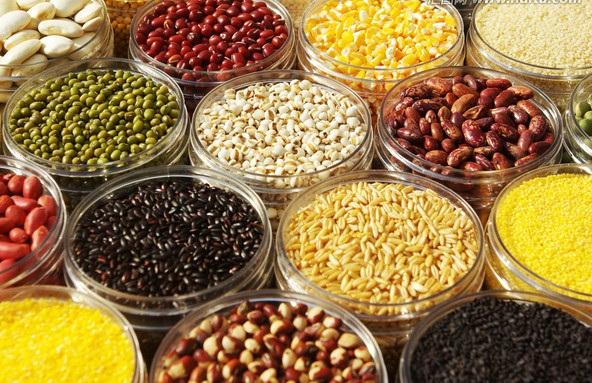
The ratio of coarse grains to rice is preferably 1:2, and those who find coarse grains difficult to cook can soak them for half an hour in advance first.
Glutinous foods should not be consumed, as they can easily raise blood glucose
For those who choose pasta, try to use soup noodles, sugar-free steamed buns, rolls, vegetable and meat buns, mixed grain buns, etc. Sweet buns and dim sum should not be chosen.
3. Protein: meat, poultry, fish, eggs, beans, milk
Carbohydrates (mainly provided by staple foods) are our main source of energy, in addition to this, our organism needs substances such as proteins to maintain its functions, and the general diabetic patient's source of protein is best to choose meat, poultry, fish, eggs, beans and milk, because they are high-quality proteins, which are much more beneficial to the organism.
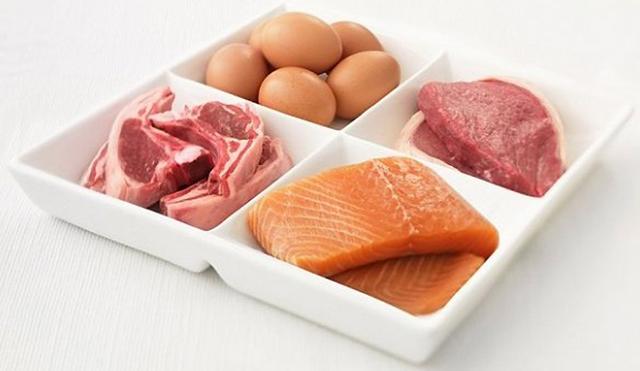
How do I choose?
You can use appropriate amount of lean pork, chicken breast, fish, rabbit, eggs, soy products and so on.
These high-quality proteins are interchangeable to diversify your dietFor example, 1 tael of lean meat can be exchanged for 1 medium-sized egg or 2 tael of northern bean curd or 20 grams of bean curd, not exceeding the total meat of the day.
Avoid foods high in fat and cholesterol, such as fatty meat, pork skin, chicken skin, squid, cuttlefish, crab roe and fish roe.

Reducing the consumption of old-fashioned soupsIf you have good blood sugar control (fasting blood sugar less than 7mmol/L, postprandial blood sugar less than 10mmol/L), you can drink the soup properly, and put the soup before meals.
If you drink soup (without eating the dregs), you should also reduce the amount of rice and meat in the meal.;
Milk is recommended to choose light milk or unsweetened yogurt for breakfast or additional meals。
4. Vegetables:
Eat more vegetables, low-sugar vegetables or melons, up to 500-600g per day, such as lettuce, oatmeal, choy sum, chard, spinach, zucchini, winter squash, and zucchini.
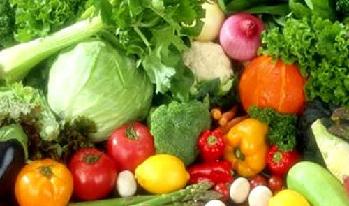
Recommended to blanch and stir-fry in vegetarian or boiled water before serving, avoid drizzling greens with oil to avoid energy overload.
If you consume vegetables with high starch content such as horse hooves, lotus root, Chinese yam, potatoes, sweet potatoes, etc., you should limit and reduce the amount of rice in the meal.
It should be reminded that there is no conclusive evidence that pumpkin in the Chinese region has a hypoglycemic effect and is not recommended to be consumed in large quantities.
5. Fruits:
Fruits are rich in vitamins, inorganic salts and dietary fiber, and are beneficial to the organism when consumed as an additional meal with good glycemic control (fasting blood glucose less than 7 mmol/L and postprandial blood glucose less than 10 mmol/L).
What fruit to choose?
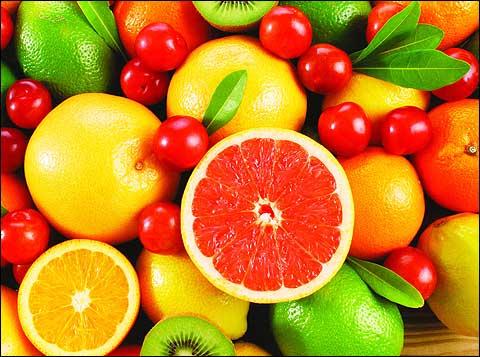
Appropriate consumption of lower sugar content of fruits, such as pomelo, guava, plums, apples, kiwi, etc., no more than 200 grams per day, the 200g of fruit is best eaten in meals, each time the addition of 100g. appropriate to consume about two hours after the meal, and to reduce the meal part of the staple food.
However, for patients with high blood sugar and positive urine sugar it is best not to eatIn particular, fruits with high sugar content such as cantaloupe, lychee, longan, grapes and bananas should be avoided;

In addition, ripe fruits should not be picked and eaten.The riper the fruit, the higher the sugar contentThe first thing you need to do is to get your hands on some of these fruits. This is a reminder that when you see fruits on sale, don't go for more~
6. Other categories:
Although nuts contain unsaturated fats and vitamin E, which can be beneficial to cardiovascular patients, given their high energy density, if they are to be consumed, it is recommended that they be consumed in small quantities every day when blood glucose is stable.
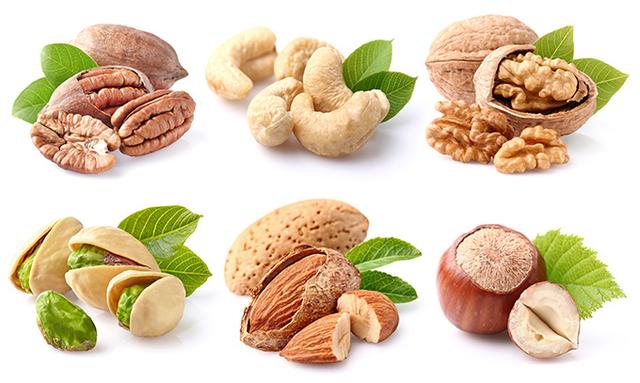
For example, 2 walnuts/day and 10 pistachios/day and count these foods in the total energy range for the day.
7. Low blood sugar:

Those who are usually easily hungry can reduce the rice and meat of three meals and use them for additional meals;
For additional meals, you can choose soda crackers (Danone), savory square bread, light milk, cucumber and tomato;
Sugar and chocolate should be available at all times. If hypoglycemic reactions such as hunger, panic, palpitations and cold sweating occur, eat immediately; if they occur frequently, adjust the hypoglycemic medication at a diabetes specialist clinic.
Warm Tip:

If your blood sugar has fluctuated significantly recently, and other causes are ruled out (e.g., change in condition, increase or decrease in medication, mood swings, etc.), the amount and type of diet needs to be considered.
If your blood glucose remains high even though you are eating exactly the amount of food prescribed by your supervising physician, you should contact your supervising physician to adjust your dietary prescription and notify the Nutrition Department for a recalculation.
If you like it, please click follow in the upper right corner.
Kudos.
Diabetes is a chronic disease. Be prepared for a long battle.The goal is to control smoothly and delay the onset and progression of complications of diabetes and improve the quality of life.So what are the details of daily life should be.
Diabetes Health Science

Many older patients do not understand the dangers of diabetes and do not take their medication as prescribed when their blood sugar is high. Doctors can only engage with you for a short period of time, and it is yourself and your family who are the frontline people in the battle against diabetes.It is diabetes health education that is the key factor in determining the success or failure of diabetes management.So both the patient and the patient's family shouldUnderstand and recognize diabetes comprehensively and learn to self-manage it.
Dietary management
The ideal dietary management for a diabetic patient is to strictly control the total number of calories of food intake per day based on your ideal weight, lifestyle habits, job, etc. Then different recipes are formulated based on the calories. However, this part is difficult for ordinary people to calculate and needs to be formulated by a professional dietitian. So mention a few points that are easy for everyone to do.
(1) Cessation of smoking and restriction of alcohol
(2) Eat more fiber-rich foods, which slow down the absorption of food and help lower postprandial blood sugar spikes.
(3) Limit salt intake to less than 6g per day, which is equivalent to one beer bottle cap.
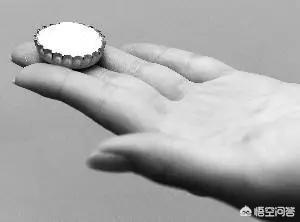
exercise in moderation

Moderate exercise, which should not be excessive, can increase insulin sensitivity in obese type 2 diabetics. However, patients with large fluctuations in blood sugar and serious eye, heart and kidney complications should not exercise for the time being.
regular inspection
Not only do you need to monitor your blood sugar at home, but you also need to go to the hospital for regular checkups. On the one hand, you can let your doctor know how well your blood sugar is controlled.Whether medications need to be adjusted.On the other hand, at least once a year, you should have your heart, kidneys, and fundus of the eyes checked.to understand the complications of diabetes。
God outside the Lancet - your side of the health gatekeeper. Every day popularize health knowledge and spread health. Thank you for your attention, likes and comments.
Let's take a look at this table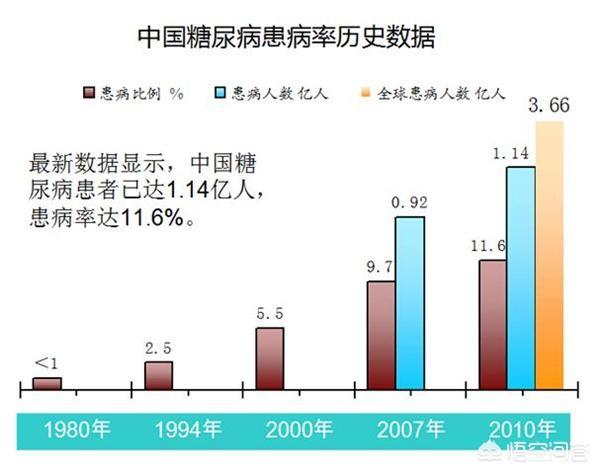
This is still the figure for 2010, and the number has increased so much more than that now.
Let's look at the hazards.

Although diabetes and hypertension and hyperlipidemia are known as the three highs, only diabetes is an independent risk factor inside the cardiovascular guidelines, which shows the harmful status of diabetes.
Well back to the topic of details of living with diabetes that you need to be aware of:.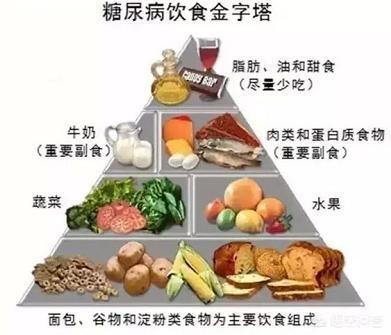
1. Eat on time and according to the amount of food, take medication or insulin on time and according to the time, blood glucose is affected by many factors, one bite more, one bite less will affect the blood glucose value. Specific diabetic diet, you should have been obtained in the hospital, today Dr. Wang will not talk too much. We say a few misconceptions:.
(1) Simply controlling the intake of staple foods is the same as dietary treatment; the smaller the meal, the better the control of the disease; salty foods or diabetes-specific foods containing sweeteners do not need to be controlled; all of these are wrong.
(2) Eat more food, just increase the dose of oral hypoglycemic drugs to normalize blood glucose; Dietary control, such as very strict, eating some snacks does not matter; this is not allowed.
2. When cooking: steam, boil, stir-fry, slip, simmer, put less cooking oil and salt, and taste lighter. Slow down the speed of eating, the order of eating: first drink soup, then eat vegetables, staple food, meat eat slowly.
3. Exercise throughout the treatment of diabetes mellitus, about half an hour after meals is better, more than half an hour of activity, slightly sweating can be, exercise before breakfast, as long as the exercise time to master properly, no discomfort, can be accepted.
Diabetes is one of the most harmful of the three highs, and the control is also one of the most difficult, the most demanding, and the precautions are also one of the most detailed, so we face diabetes to be more attentive, do not take the enemy lightly.
Most harmful! Hardest to control! The most preoccupying! The most detailed! This is the characteristic of diabetes! Dr. Xiao Wang works with you to keep your blood sugar under ideal control!
Diabetes popularization is not just about controlling the diet, day how to take medication, but awareness! The awareness towards diabetes must change! To take diabetes seriously enough!
It's been a long time since Steady Sugar has come to answer questions, this time, thanks for the invitation, about how to pay attention to diet in diabetes, Steady Sugar APP shares its experience to you!
1、Sugar lovers should first limit the total calorie intake
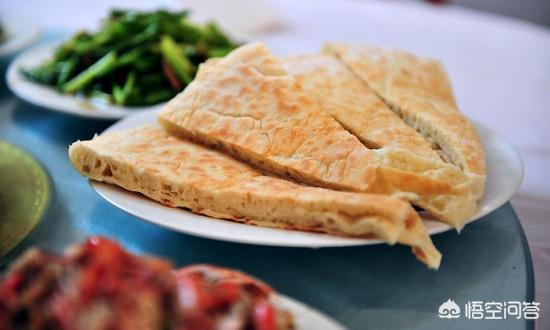
There are three major energy-producing substances in food (carbohydrates, fats, and proteins), and for sugar lovers, all three have to be counted, especially carbohydrates!
(1) Staple food: about 5 taels per day according to raw food (equivalent to 1~2 fist-sized cooked food for me), according to three meals per day, the amount of staple food for each meal is equivalent to the size of two fists for the sugar addicts themselves.
(2) Meat: 2 taels per day, but no fatty meats, animal skins, or internal organs (liver, kidneys, intestines, etc.).
(3) Fats and oils: 2 to 3 small tablespoons of about half a tael per day:, eat less of foods high in fats and oils such as frying, stir-frying, cooking, deep-frying, and broiling, and eat less of shabu-shabu mutton, don't eat oil soups in the dishes, and you can eat processed foods such as steaming, boiling, simmering, stewing, mixing, and so on.
2. Adhere to a low-salt diet and drink plenty of water

Salt restriction is one of the important guidelines for dietary intervention in diabetes mellitus; daily salt intake should not exceed 6 g per day, and daily salt intake can be estimated as ≈6 g of salt in the cap of a mineral water bottle and ≈3 g of salt in the cap of a beer bottle.
And drinking more water not only reduces the chance of urinary tract infections and increases the use of antimicrobials for diabetes; it also . Lower blood viscosity and reduce the formation of diabetic complications; most notably, it reduces the incidence of diabetic hypertonic coma.
3. Increase in fruits and vegetables and soy milk
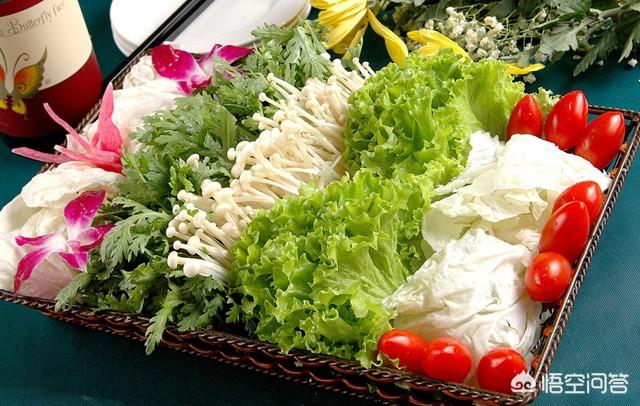
Vegetables and fruits are good sources of various vitamins and minerals. Vitamins and minerals are like scavengers of blood vessels, which can effectively reduce the level of fat and cholesterol in the blood and increase the elasticity of blood vessels.
Sugar friends daily vegetables about 1 pound, and a variety of vegetables should be matched. Sugar APP reminds: like potatoes, taro, old corn and other "vegetables", sugar friends to treat them as staple food, if you eat these foods should be appropriate to reduce the staple food.
Milk 300mL per day, and on top of that, with the right amount of soy products and seafood to ensure adequate vitamin and mineral intake.
4、Choose the right seasoning and cooking method
Sugar lovers should preferably choose the cooking method of steaming, deep-frying should be avoided as much as possible. Regarding the choice of kitchen seasoning, you should also be careful, seasoning products may not seem to have much to do with it, but over the years, it also has an impact on the body of sugar lovers.
Sugar lovers can always eat: rice vinegar, yellow sauce, black beans
Minimize: salt, monosodium glutamate, sweet pasta sauce, soy sauce, peppercorns, dashi, cloves, cumin, cooking soda
Try not to eat: white sugar, icing sugar, brown sugar, jam, mustard, nutmeg
In daily life, foods such as glutinous rice, cola and instant noodles should also be avoided as much as possible.
More diabetes sugar control experience and pump knowledge, download the stable sugar APP, there will be a person to answer for you!
Eat less sugary, starchy things, eat more vegetables, grains and cereals, crude fiber,, things, pay attention to control the intake. Also moderate exercise, reasonable use of medication 💊,,,,
This question and answer are from the site users, does not represent the position of the site, such as infringement, please contact the administrator to delete.